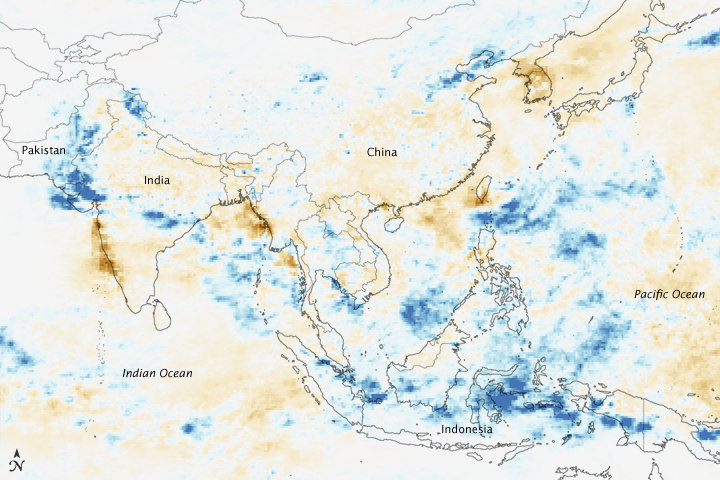KARACHI: The time has come to reduce manmade temperatures by a significant level to combat global warming, which may cause more floods and droughts in Pakistan, advised environment experts and ministers.
While talking to Daily Times, World Wide Fund for Nature (WWF) Pakistan Coordinator Nasir Panhwar said emission of greenhouse gases, rise in manmade temperatures including burning of fossil fuels and deforestation were major factors contributing to global warming.
The recent floods in Pakistan were due to global warming and change in extreme weather condition, he said, adding that global warming would cause more droughts and floods in the country in future.
NASA has a slightly different story
La Niña usually enhances the Asian Monsoon, and it may have been a factor in shaping the intense 2010 monsoon. In July 2010, La Niña conditions had developed. Ocean temperatures in the western Pacific were warmer than normal. The patterns of unusually heavy rain seen in this image are similar to rainfall patterns caused by La Niña.
Additional factors may also have influenced the 2010 monsoon rains. The northern Indian Ocean was also warmer than normal. In particular, waters off the coast of Pakistan (the Arabian Sea) were much warmer than normal in satellite-based sea surface temperature measurements taken in July 2010. These enhanced temperatures are indicative of a shorter-scale weather pattern that also enhances monsoon rains.
http://earthobservatory.nasa.gov/NaturalHazards/view.php?id=45177



And if Hurricane Tomas hits Haiti, the resulting devastation will be pegged to
global warmingclimate changeclimate chaosclimate catastropheclimate disruption.Climate disruption is a CIA plot to disrupt Pakistan 🙂
And in more recent news, the hottest temps will be during the daytime!!
Of course El Ninoe is going to bring more flooding than La Nina. And as the El Nino’s get warmer and warmer, they’ll bring more flooding.